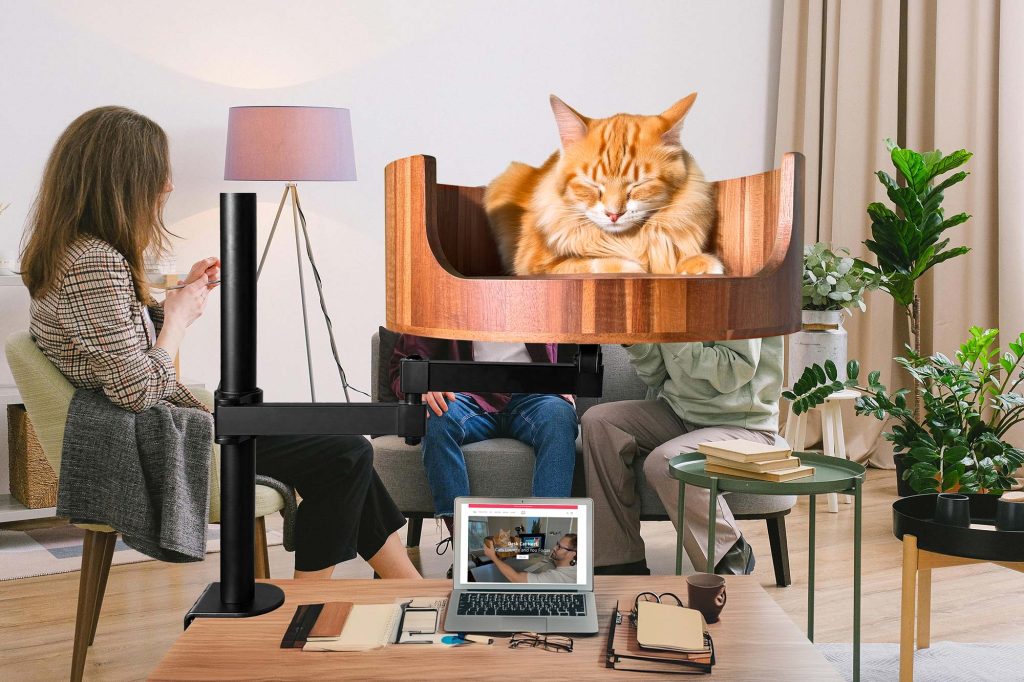Have you ever noticed your cat meowing without making any sound? While it may seem odd, this behavior is actually quite common among some feline companions. Understanding why cats meow silently can give insight into their behavior and emotions, helping pet owners better care for their furry friends.
In this article, we will explore the reasons behind why cats meow silently and what it can tell us about their overall well-being. From communication and socialization to health issues and environmental factors, there are a variety of reasons why cats may choose to meow silently. By understanding these reasons, pet owners can create a more enriching and fulfilling environment for their beloved cats. So, next time you notice your cat meowing silently, you’ll have a better understanding of what they might be trying to communicate.
1. Silent meowing is a common behavior in cats, often used as a way to communicate with humans.
2. Cats may meow silently due to various reasons such as hoarseness, old age, or simply as a form of mimicry to get attention.
3. Understanding your cat’s body language and context can help decipher the message behind silent meowing.
4. Silent meowing can also be a sign of discomfort or pain, indicating the need for veterinary attention.
5. Building a strong bond with your cat through regular interaction and communication can help prevent miscommunication and strengthen your relationship.
Causes of Silent Meowing in Cats
There are several reasons why a cat may meow silently. One common cause is laryngitis, which can result from various factors such as excessive meowing, respiratory infections, or other underlying health issues. Cats may also choose to meow silently as a form of communication, especially when they are trying to convey a message without alerting other animals or humans. Furthermore, some cats are simply quieter by nature and may prefer to communicate through body language or facial expressions instead of vocalization.
Physical and Behavioral Indicators of Silent Meowing
When a cat meows silently, there are several physical and behavioral indicators to look out for. These may include the cat opening its mouth without emitting any sound, moving its lips as if meowing but no sound coming out, or making a squeaky or raspy sound. In terms of behavior, a cat that is meowing silently may exhibit signs of frustration, confusion, or anxiety. By paying attention to these cues, cat owners can better understand the underlying reasons for their cat’s silent meowing.
Tips for Responding to Silent Meowing
When a cat meows silently, it is important for cat owners to respond appropriately in order to address the cat’s needs or concerns. One tip is to observe the cat’s body language and behavior to determine the reason for the silent meowing. Providing a calm and soothing environment can help alleviate any anxiety or stress the cat may be experiencing. Additionally, engaging in interactive play or offering treats as positive reinforcement can help reinforce good behavior and communication in cats that meow silently.
Case Study: Silent Meowing in a Rescue Cat
To further illustrate the phenomenon of silent meowing in cats, let’s consider a case study of a rescue cat named Luna. Luna was found abandoned and malnourished, displaying signs of silent meowing when trying to communicate with her caregivers. Through patience, love, and proper care, Luna gradually regained her voice and began meowing audibly again. This case study highlights the importance of understanding and addressing the underlying issues that may be causing a cat to meow silently.
Frequently Asked Questions
Why does my cat meow silently?
There are several reasons why your cat may be meowing silently. It could be due to a medical issue such as laryngitis or a throat infection. It could also be a behavioral issue where your cat has learned that meowing softly gets them what they want. Observing your cat’s behavior and consulting with a veterinarian can help determine the cause.
Can Desk Cat Nest help with my cat’s silent meowing?
Desk Cat Nest provides a cozy and secure space for your cat to relax and feel safe, which can help reduce stress and anxiety. This can in turn potentially help with any underlying causes of silent meowing by creating a calm environment for your cat to communicate more clearly.
How should I introduce my cat to Desk Cat Nest?
It’s important to give your cat time to explore and get comfortable with the Desk Cat Nest on their own terms. Place it in a quiet and familiar location, and leave treats or toys inside to encourage your cat to investigate. Gradually introduce your cat to the nest by using positive reinforcement and allowing them to explore at their own pace.
Is Desk Cat Nest suitable for all cat breeds?
Desk Cat Nest is designed to be a versatile and comfortable space for cats of all breeds and sizes. However, some cats may prefer different types of bedding or prefer to sleep in different locations. Monitor your cat’s behavior to see if they enjoy using the Desk Cat Nest, and make adjustments as needed.
How can I encourage my cat to use Desk Cat Nest?
Adding familiar scents, such as their favorite blanket or a piece of clothing with your scent, can help entice your cat to use the Desk Cat Nest. Placing treats or toys inside can also encourage them to explore and relax in the nest. Positive reinforcement, such as petting or giving treats when your cat uses the nest, can also help reinforce the behavior.
In conclusion, providing your cat with a comfortable and cozy space to rest and relax, such as a Desk Cat Bed, can help address the issue of why your cat may be meowing silently. By offering a designated spot for your feline friend to retreat to, they can feel safe and secure, reducing stress and potential causes for silent meowing. The Desk Cat Bed not only provides a peaceful sanctuary for your cat, but also offers a variety of benefits including improved sleep quality, reduced anxiety, and enhanced overall well-being. Investing in a Desk Cat Bed is a valuable choice to help address the mystery of why your cat may be meowing silently and ultimately improve their quality of life.


